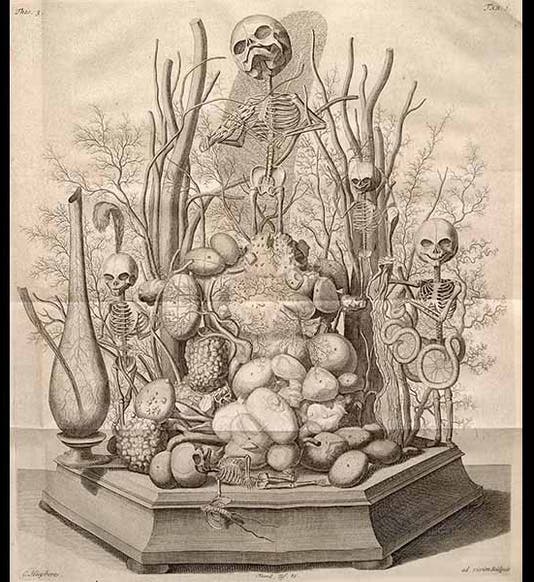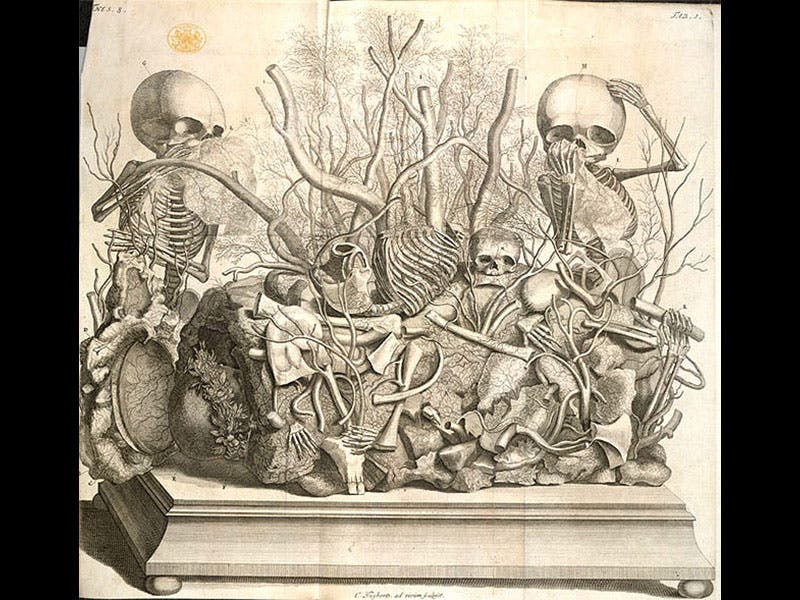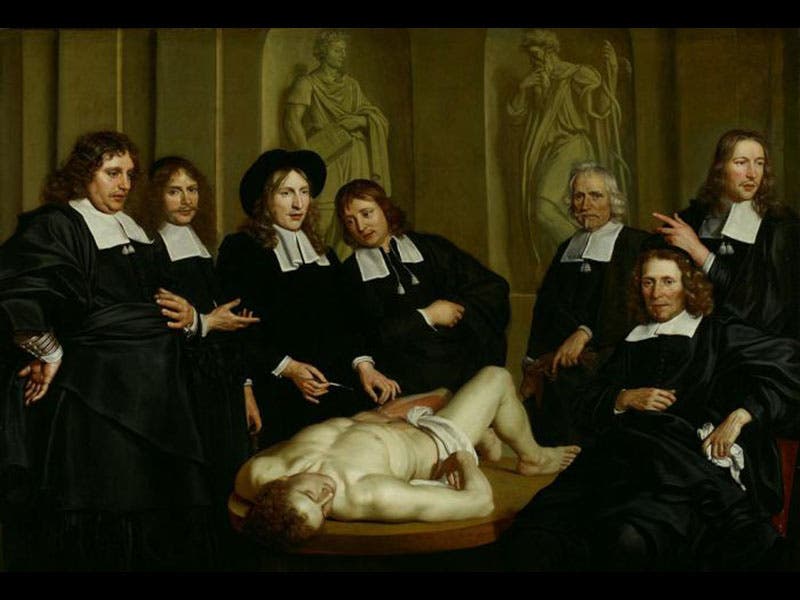Scientist of the Day - Frederik Ruysch
Frederik Ruysch, a Dutch anatomist, was born Mar. 23, 1638. Ruysch was demonstrator of anatomy at the Surgeon’s Guild in Amsterdam for nearly sixty years, beginning in 1667. Ruysch was particularly interested in fetal anatomy, and he began to construct anatomical “tableaux” with fetal skeletons as the main subjects. He had discovered a way of injecting colored wax into various vessels and organs, and he created dioramas with landscapes of kidney stones, and trees fashioned from injected arteries, as backgrounds for his skeletons, who were usually engaged in typical memento mori activities, such as weeping into mesentery handkerchiefs or contemplating ephemeral mayflies, and some not so typical, such as playing instruments made of cartilage with bows fashioned from dried veins. Ruysch published engravings of these anatomical wonderlands in a series called Thesaurus anatomicus (1701-16); we have Ruysch’s Opera in the History of Science Collection (1737), which includes these Thesauri, and all of the astonishing fold-out engravings, two of which can be see above.
Do you remember Rembrandt’s famous painting, The Anatomy Lesson of Dr. Nicolaes Tulp (1632)? Ruysch was the subject of two such paintings, one of which we show above (third image), where he is the third figure from the left, wielding the scalpel. This painting was done in 1670 by Adriaen Backer, who was alas no Rembrandt, and hangs in the Amsterdam Museum.
Dr. William B. Ashworth, Jr., Consultant for the History of Science, Linda Hall Library and Associate Professor, Department of History, University of Missouri-Kansas City. Comments or corrections are welcome; please direct to ashworthw@umkc.edu.









